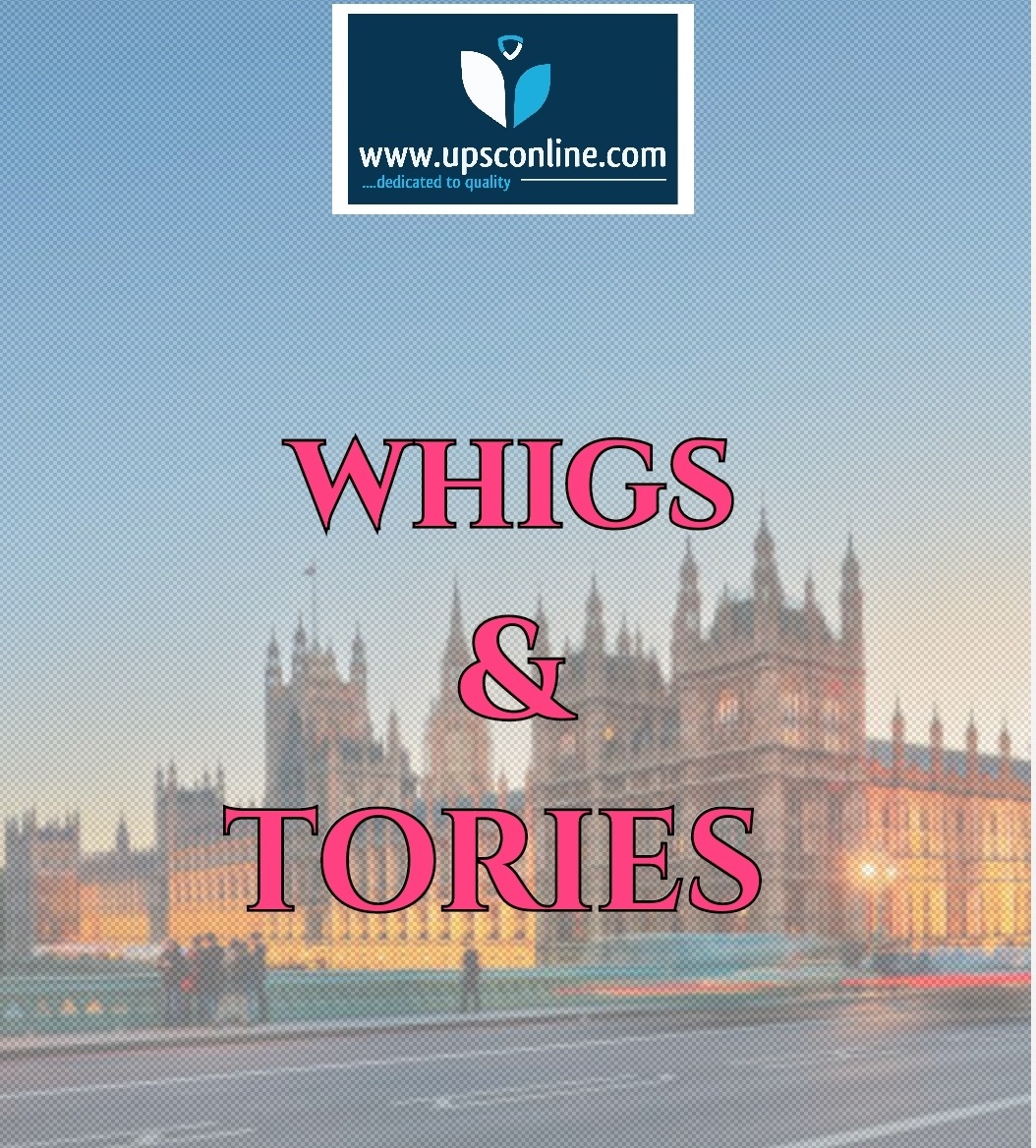The “Glorious Revolution” of 1688-1689 marked the turning point from absolute rule to a constitutional monarchy in Britain. The result was in itself revolutionary in that the monarch could no longer assert the divine right to absolute rule. Two groups of politicians were involved in that revolution: the Whigs (supporters of William of Orange) and the Tories (supporters of the Stuarts).
The main event of the revolution was the dismissal by Parliament of James II “the Stuart monarch of England and Wales, who also ruled over Scotland as James VII. James was replaced with his own daughter, Mary, and his Dutch son-in-law, William of Orange, who took the title William III. James, a Catholic, had taken the throne in 1685, and he immediately abused his power to install religious equality for Catholics.
In 1688 James’s Catholic wife gave birth to a son, which gave rise to a threat of potentially long-term Catholic monarchy. James way of ruling offended huge parts of the population, who were afraid that the Protestant church would lose its influence. As a result of this, a few Protestant politicians approached William of Orange convincing him to invade and take the throne.
As a result of this, a few Protestant politicians approached William of Orange convincing him to invade and take the throne. William, a Protestant and opponent of Luis XIV, had already planned to prevent a possible Catholic alliance between England and France.
When he reached London in November 1688, the support of James soon collapsed. Following this, James fled to France, leaving William free to take the throne. The threat of Catholicism still remained during the first half of the 18th century. The reason for this was a movement known as Jacobitism “(after ‘Jacobus’ the Latin word for James).
Many plans were made to overthrow the monarchy and by this to restore the line of James. There were two major Jacobite uprisings in 1715 and 1745, but they couldn’t endanger the new established system. In fact Jacobitism reached just the opposite of what it wanted. The fear for further revolution united supporters of the Protestant monarchy from across the country.
In 1689 the Parliament invited William and Mary to govern the country in cooperation. However, this invitation was bound to a Bill of Rights. This Bill made it impossible for Catholics to hold the throne, which at the same time secured the Protestant Church as the established religion.
“In addition, it prevented the monarch from maintaining an army during peacetime, and it took from the monarch the power to abolish laws”. Another consequence of the Glorious Revolution was that Parliament became established as the primary organ of government, with which the monarch needed to collaborate. Furthermore, the parliament took over the power to control the economy.
The events during the revolution in Britain had also major consequences to Scotland and Ireland. James deposition in Britain also weakened his position in Scotland. Thus later in 1689 the Scottish crown was handed to William and Mary. In addition a Bill, similar to the Bill of Rights, made it impossible for Catholics to hold the Scottish throne. In Ireland, however, the situation was different.
The vast majority of the population was Catholic and supported James. Therefore William launched a military campaign against Ireland and implemented the Protestant Anglican ascendancy in Ireland. Moreover he imposed severe structures upon Irish Catholics, which greatly limited their rights.
In an evolutionary sense, the new established system, with its various changes, can be seen as a forerunner to a modern state. The revolution provided the space in which political factions could prosper and later become independent parties in their own right. The terms “Whig and Tory” did not always function as political labels.
The word ‘whig’ originates from the word ‘whiggamore’ which literally translates as ‘cattle driver’.
They became “party” labels during the Exclusion Crisis (1679-81), but they have an older history and a complete different meaning compared to the way they were used from the late 17th century onwards. The most famous dictionary of the 18th century, written by Samuel Johnson, quotes the following about the terms Whig and Tory.
The term Whiggamore has been around since 1649 and refers to a group of rebels that were against the government, in Western Scotland. Thus the rising of the political term Whig can be connected to the Presbyterianism in Scotland during the 17th century. The term than was transferred to those English politicians that showed a disposition to oppose the court, and to treat Protestant Nonconformists as heroes.
The term Tory also comes from outside of England. Initially the term was used for Papists that lived in the Irish wetlands and lived by robbing English settlers and soldiers. Later on the Whigs transferred the term to the politicians that opposed the exclusion of James II. Although the terms Whig and Tory were first used as an insult to the opposite party, both parties soon adopted the terms and used it with pride.
In relation to both church and state, religion and politics, the terms Whig and Tory have been redefined and transformed in their associations and inflections in the period since they first achieved currency around 1681. The modern associations of Whig and Tory with “liberal” and “conservative” can be misleading. Neither party can easily be designated as “progressive” and each has to be examined in terms of its particular engagements in specific contexts.
The Whigs and Tories consisted of groups of interest. They were people who shared the same religious, political and economic beliefs. The term “party” though is connected to a modern state. Thus the term “party” cannot be applied to them offhand. More appropriate would be the term factions.
The main political division between the Whigs and the Tories is derived from the factional conflict of the “Exclusion Crisis” (1679-81), Whigs being supporters of Exclusion and Tories being their Royalist opponents.Te fundamental division lies in the conceptions of sovereignty and political power.
Whigs conceived power as something ultimately residing in “the people” and view rulers as serving the will and welfare of the people; Tories conceived sovereignty as residing in rulers and view “the people” as subjects whose duty is to obey.
Tories are thus identified with a system of hereditary power–exercised especially by monarchs and the established Church–while Whigs are associated with a system of popular power, though generally in the hands of the merchant class rather than the general population.
During the Exclusion Crisis the Whigs were led by Lord Shaftesbury. The first Exclusion Bill was voted with a substantial majority in May 1679. In a reaction to this Charles II later dissolved the parliament. The second try followed just 14 months later when the Bill had passed the House of Commons but was rejected in the House of Lords.
The third was again cancelled by Charles dissolving the parliament and intending to rule without parliament. Without being in parliament the Whigs had to suffer huge losses and their power quickly lost its momentum.
Under the reign of William and Mary, the political influence of Whigs and Tories changed constantly. Although the Whigs supported William during his way to the throne, they were not the only choice. To William, the Tories seemed to be generally friendlier to royal authority than the Whigs. By ruling with both of them he prevented either faction of getting too much influence in the government.
When it comes to foreign policy, the Whigs were the faction that supported Britain’s focus on international trade. This led to major criticism by the Tories, due to the financial and human costs of wars fought under William and Anne. The Whigs and Tories derived most of their wealth from land, but the Tories represented the landed interest, whereas the Whigs were more open to international trade.
After the death of Anne in 1714 the situation in parliament had completely changed. A new royal house (the Hanoverians) took over and with them the Whigs monopolized political power for almost half a century. One reason for this is that a considerable amount of Tories were still in favor of the Stuarts. Their situation was a dilemma, because they wanted to support the line of James but not his Catholicism, at least not in public.
Another reason for this is that neither George I or George II were familiar with or interested in Britain’s political affairs. The most important Whig leader of that period was Robert Walpole. Walpole was the first prime minister in British history. He was mainly responsible for political dominance of the Whigs during his term in office (1721-42).
He managed to deal with the financial crisis that was caused by the South Sea Company. He pursued a policy of peace abroad, low taxation and managed to balance the interests of the landed and trade fractions. However, he was also accused of corruption in his efforts to retain political power.
The Whig supremacy ended with the election of George III in 1760. George tried to restore his power by freeing himself from the Whigs. Just like William he saw the Tories as friendlier and more open to royal authority. By the late 18th century the stereotypes of the Whigs and the Tories had changed.
Popular leaders among the whigs are – Robert Walpole, William Pitt, the Elder, Charles James Fox, Lord Grey, Lord Russell & Lord Palmerston. The Tories were a powerful and dominant party even during the reign of Queen Anne.
A Tory was a “conservative,” a supporter of the status quo with its various privileges and exclusions, while a Whig was a “liberal” or “reformer,” committed to modernizing the system of church and state. These latest inflections stuck through much of the nineteenth century, during which Tories or Conservatives opposed Catholic Emancipation, electoral reform, and Irish Home Rule, while Whigs or Liberals championed those causes.
In contrast to the term Tory, the term Whig almost died out and was replaced by the term “liberal”.It is interesting that since the last general elections in May 2010, the political “descendents” of the Whigs and The Tories are united under a coalition and build a government again.



0 Comments